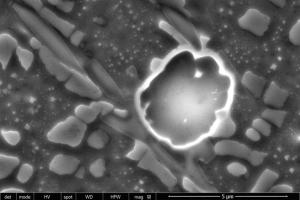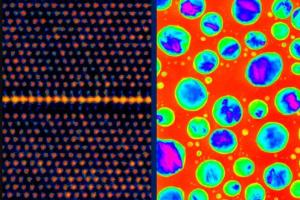
Multiscale Materials Innovation Interest Group
We are a research interest group focused on accelerating multiscale materials innovation through advanced electron microscopy, AI-driven analysis, and core facility engagement. Our community seeks to understand the complex, hierarchical architectures that span the nanoscale to the macroscale.Become Involved
-

Sign Up for Announcements
How are you all handling email list
(Mailing list service is option; Teams also can send emails to all members by default).
-

Use Internal Resource Site
- Find tutorials, best practices & guides
- Share and discuss ideas
- Get announcements about workshops
- Follow our internal calendar for seminars
-

Who We Are
Discover collaborators, meet the organizers and co-organizers and find department ambassadors.
Lead Organizers

Tengteng (Toni) Tang
Dr. Tang's research program centers on the structure-mechanics relationships of hierarchical biological materials and their clinical and biomedical applications. Many biological tissues, such as our own skeleton, perform a diverse range of functions with remarkable mechanical properties. These exceptional properties arise from the functional

Kory Burns
Kory Burns is an Assistant Professor in the Department of Materials Science and Engineering starting Summer 2024. Kory obtained a B.S. in Chemistry from Valdosta State University, an M.S. in Materials Science and Engineering, and a Ph.D. in Materials Science and Engineering (Nuclear Engineering Program).

Arthur W. Lichtenberger
Dr. Lichtenberger is a Research Professor at UVA and the NRAO Director of the UVA Microfabrication Laboratories. He has built an internationally recognized research program in superconducting materials, devices, circuits and packaging for ultra-sensitive single pixel and and array THz detectors.
OBJECTIVES
- Advance Cross-Disciplinary Research:
Integrate FIB-SEM, TEM, and AI to investigate multiscale phenomena in biomaterials and engineered systems, from cell-matrix interactions to alloy defect formation. - Increase Characterization Knowledge:
Encourage a larger, more diverse user base to adopt advanced EM and computational tools to help their research objectives. - Train and Support Emerging Researchers:
Offer structured workshops and mentorship to students, postdocs and new faculty who can incorporate advanced EM and AI in their own research. - Expand Funding and Publication Opportunities:
Expand collaborations with partner research institutions (i.e., ORNL) and discuss LDRDs, as well as external funding opportunities leveraging collective expertise.
Links


